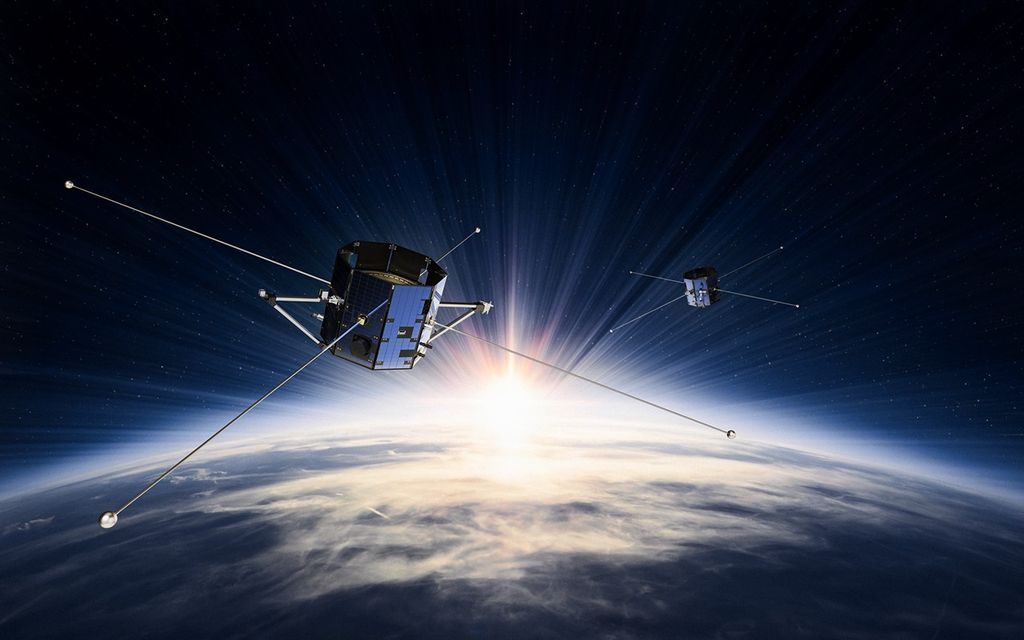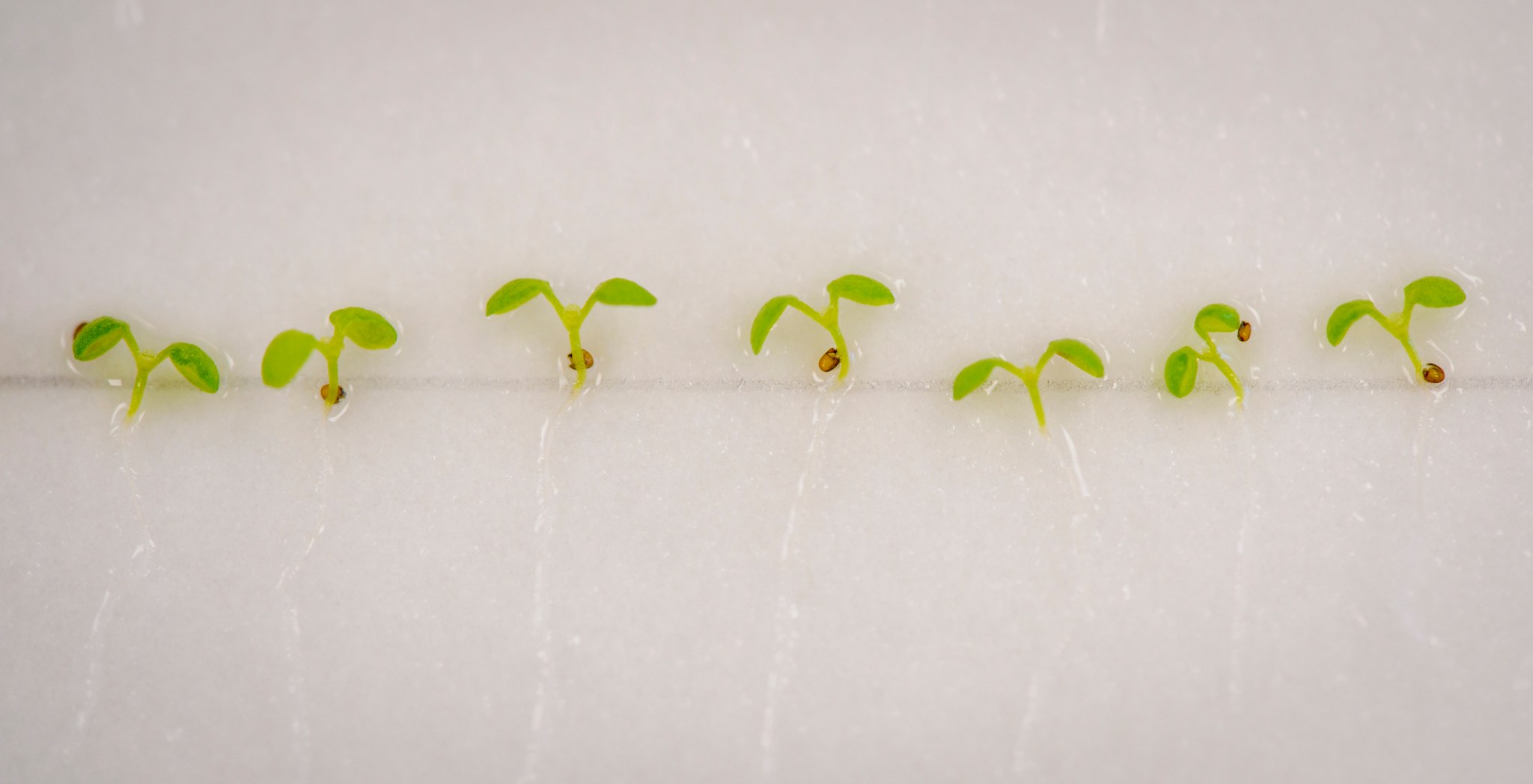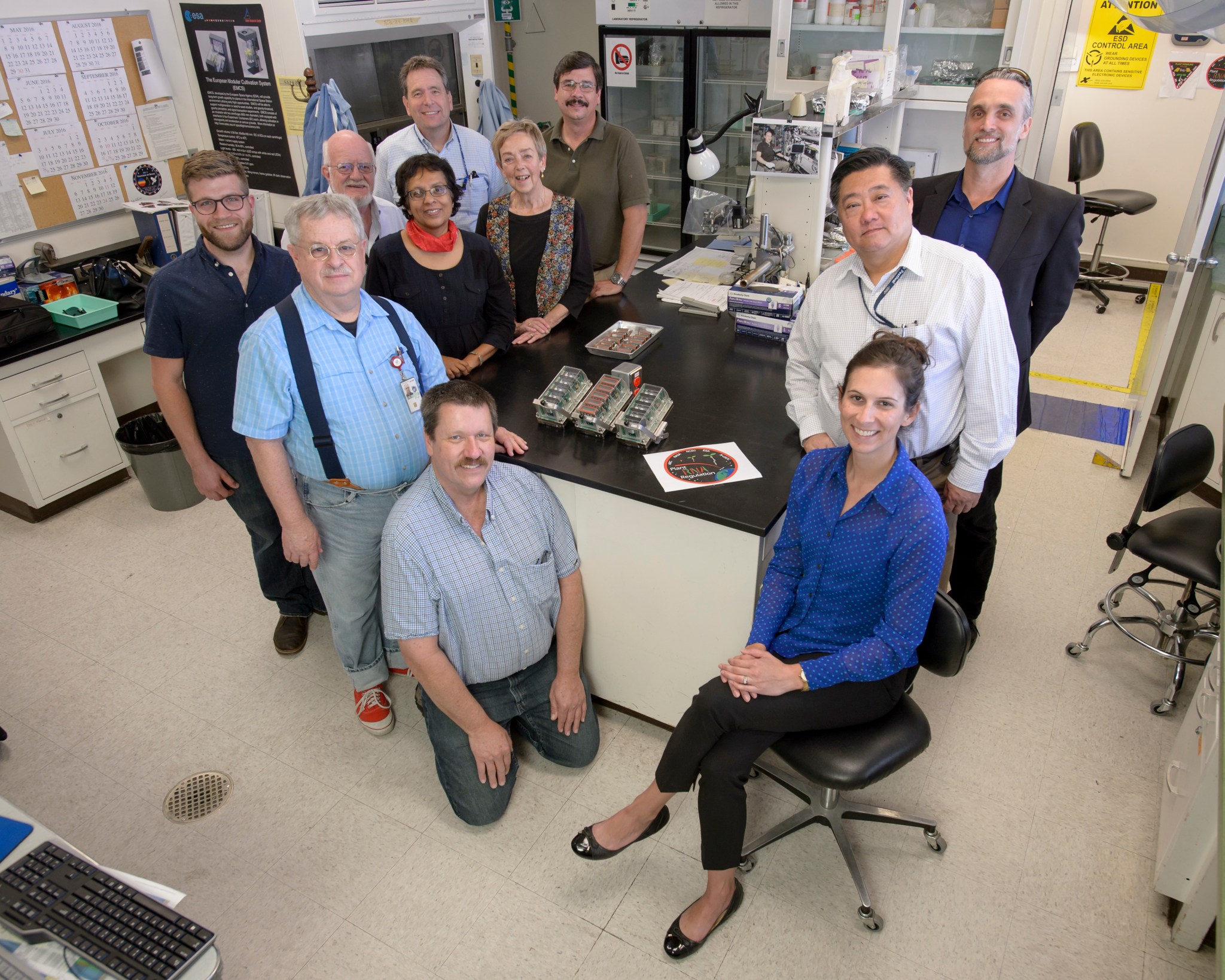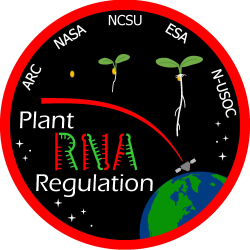Plant RNA Regulation (SpaceX-9)
The Plant RNA Regulation (PRR) payload is planned to launch to the International Space Station aboard NASA’s ninth commercial cargo resupply flight of the Space Exploration Technologies (SpaceX) Dragon spacecraft in July 2016.
The PRR investigation studies the plant model organism Arabidopsis thaliana, a member of the mustard family that has been widely used for basic research in genetics and molecular biology. During the PRR experiment, A. thaliana seeds will germinate and grow for approximately six days into tiny seedlings aboard the space station. Investigators will study these seedlings to better understand the biological mechanisms involved in plant responses to spaceflight. The PRR study focuses on the roles that certain types of molecules known as ribonucleic acids (RNAs) play in these responses during the early development of plant roots and shoots.
Plants sustain human life on Earth, and they also may be vital components of future life support systems for long-duration spaceflight and habitation. However, the space environment subjects plants to many unfamiliar stresses and is not optimal for plant growth.
The long-term goals of this research are to better understand the biological mechanisms that plants use to sense and adapt to changes in their environment. This knowledge can be applied towards designing plants that are better able to withstand adverse environmental conditions and also will help researchers to determine the ability of vegetation to provide a complete, sustainable, dependable and economical means for human life support in space.
Prior to each of two duplicate runs of the experiment, station crew will load hardware that contains dormant A. thaliana seeds into the European Modular Cultivation System (EMCS) facility. Personnel at the Norwegian User Support Operations Center (N-USOC) facility in Norway will initiate each experiment run by sending a command to the EMCS facility to hydrate the seeds and thus start the germination process. During each run, half of the samples will be exposed to microgravity and half of the samples will be exposed to artificial gravity on a spinning rotor. At the completion of each run, station crew will freeze the seedlings and subsequently will return them to Earth for post-flight analysis.
PRR is managed and supported by the Space Biology Project at NASA’s Ames Research Center in California’s Silicon Valley. Funding for Space Biology comes from the Space Life and Physical Sciences Research and Applications Division within the Human Exploration and Operations Mission Directorate at NASA Headquarters.
Project Team
Payload manager: Elizabeth Pane, NASA, Space Biosciences Division, NASA’s Ames Research Center
Project manager: Marianne Steele, Ph.D., Fully Integrated Lifecycle Mission Support Services, Space Biosciences Division, NASA’s Ames Research Center
Project scientist: Gwo-Shing Sun, Ph.D., Fully Integrated Lifecycle Mission Support Services, Space Biosciences Division, NASA’s Ames Research Center
Principal investigator: Imara Perera, Ph.D., North Carolina State University
Payload Developer: NASA Ames Research Center
EMCS Hardware Developer: Airbus Defense and Space
EMCS User Support and Operations Center: Norwegian User Support and Operations Centre (N-USOC)
More information
For more information, see the Space Station Research Explorer about the Plant RNA Regulation mission.
The Experiment-unique hardware used for this investigation was developed for spaceflight plant biology research by the Space Biosciences Division at NASA’s Ames Research Center.
Download the “Variable Gravity Plant Biology Spaceflight Research” fact sheet from our NASA Facts collection.































